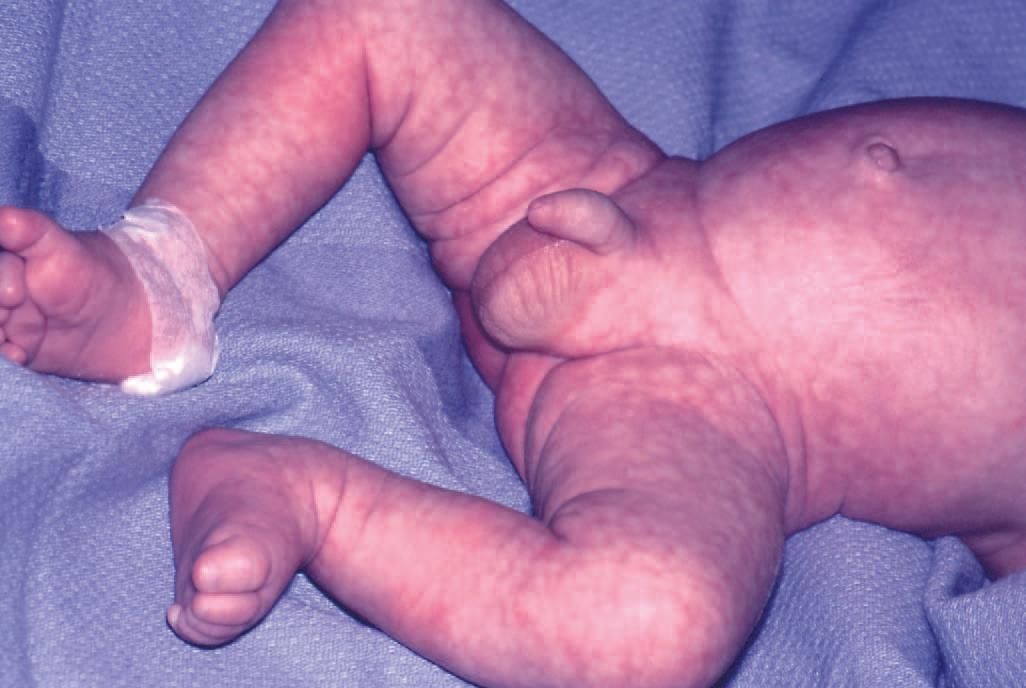Cutis Marmorata in a 6-Week-Old Boy
This skin abnormality is cutis marmorata-a physiological dilatation of capillaries and venules of the trunk and extremities in infants and young children caused by exposure to cold. The discoloration fades with warming, as was the case with this baby. The condition is seen especially when subcutaneous fat is decreased.

FigureThis lacy, purplish skin discoloration was noted on the trunk and lower extremities of a 6-week-old boy during a well-baby visit. The mother had noticed the discoloration periodically since birth. It was most apparent when the baby was cold.
This skin abnormality is cutis marmorata-a physiological dilatation of capillaries and venules of the trunk and extremities in infants and young children caused by exposure to cold. The discoloration fades with warming, as was the case with this baby. The condition is seen especially when subcutaneous fat is decreased.
Reassurance that nothing is wrong and keeping the baby warm are the only treatments necessary. As the infant gains weight, the condition resolves, usually after several weeks or a few months. Persistent cutis marmorata may occur with Down syndrome, trisomy 18, and Cornelia de Lange syndrome.1 In cutis marmorata telangiectatica congenita, the vessel dilatation persists even after rewarming and has a deep violaceous color.
References:
- Paller AS, Mancini AJ. Hurwitz Clinical Pediatric Dermatology: A Textbook of Skin Disorders of Childhood and Adolescence. 3rd ed. Philadelphia: Elsevier Saunders; 2006:19.
Recognize & Refer: Hemangiomas in pediatrics
July 17th 2019Contemporary Pediatrics sits down exclusively with Sheila Fallon Friedlander, MD, a professor dermatology and pediatrics, to discuss the one key condition for which she believes community pediatricians should be especially aware-hemangiomas.